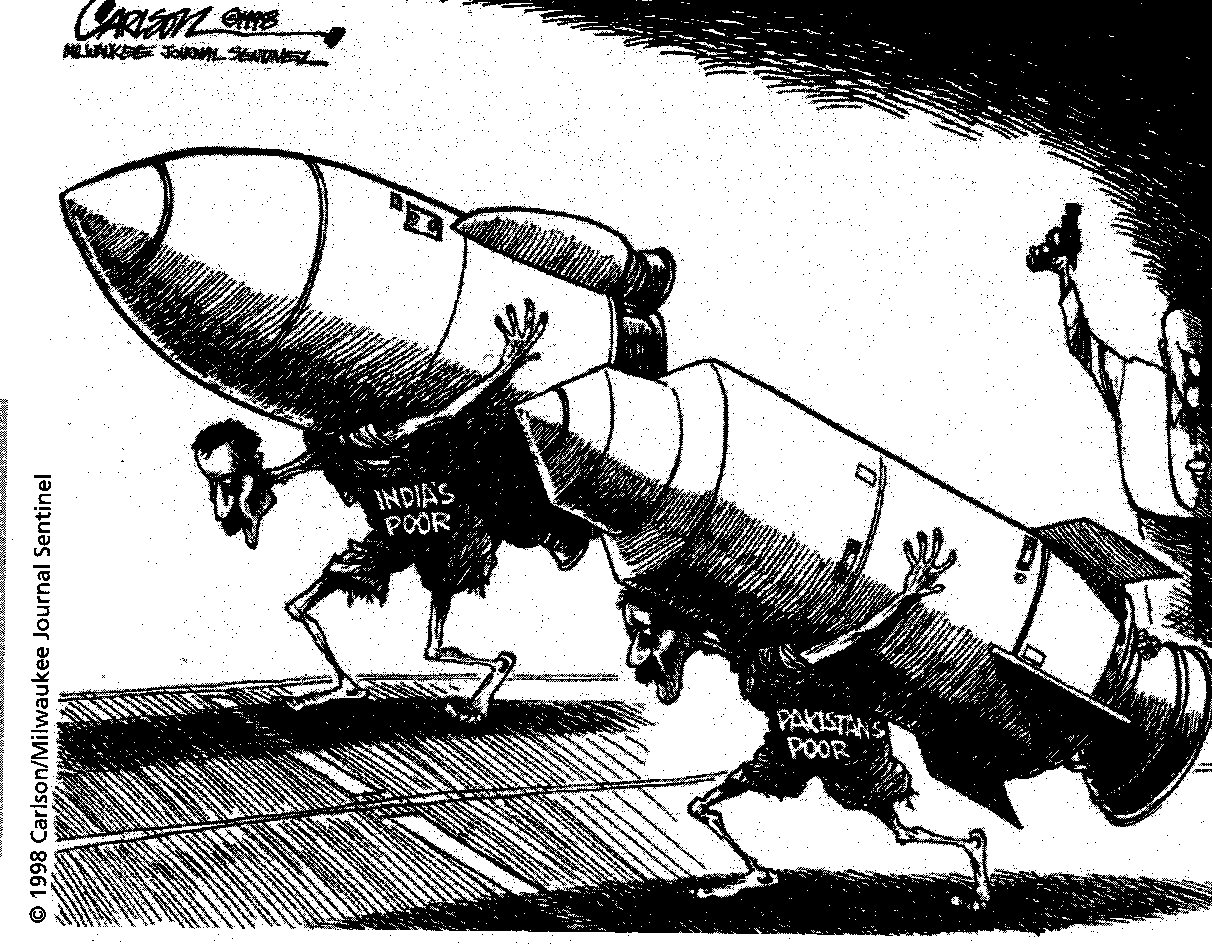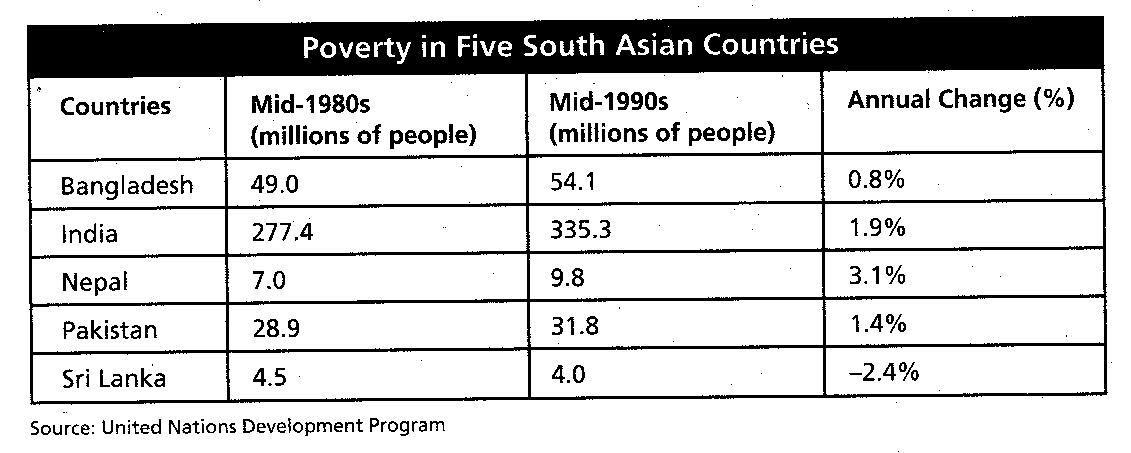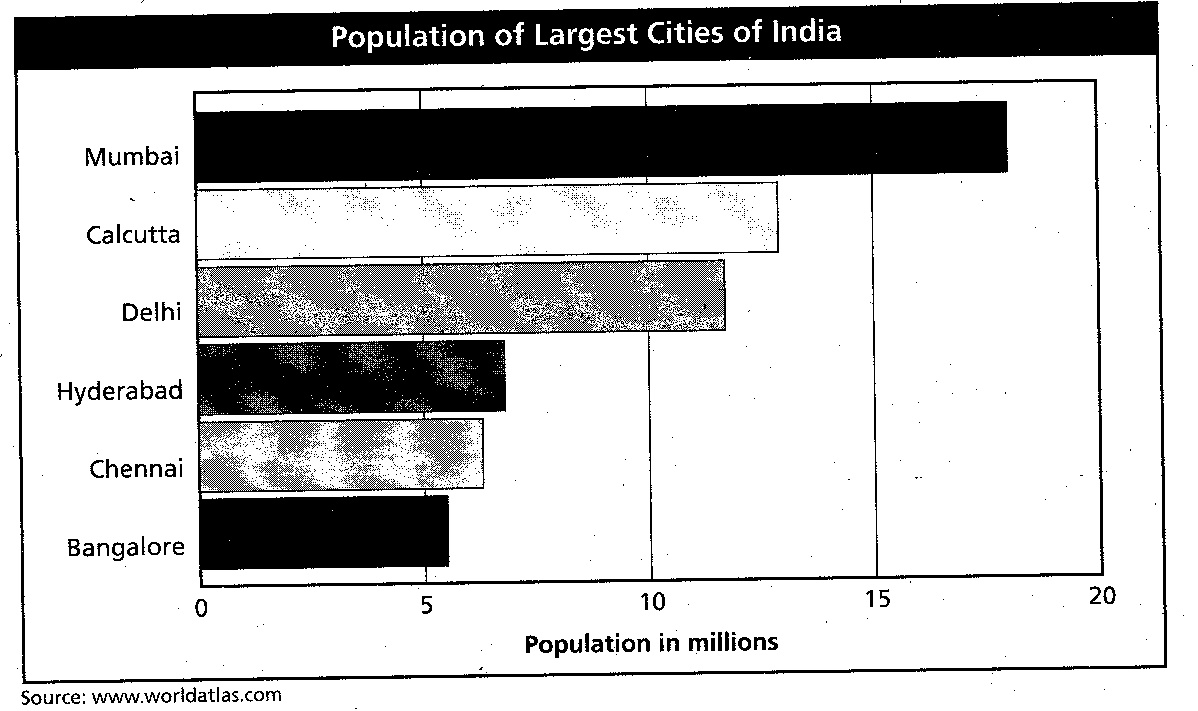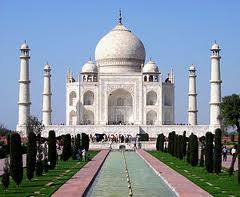India Introduction & Ch. 13.1 Quiz

Quiz on introduction and ancient history of India
- 1.
Which civilization is believed to have been the first one in India?
- A.
Mauryan
- B.
Inca
- C.
Harappan
- D.
Aryan
Correct Answer
C. HarappanExplanation
The Harappan civilization is believed to have been the first civilization in India. This ancient civilization thrived in the Indus Valley around 2500 BCE. The Harappan people developed urban planning, advanced agriculture techniques, and a system of writing. They had well-organized cities with sophisticated drainage and sewage systems. The discovery of the ancient cities of Harappa and Mohenjo-daro provided valuable insights into the early history of India. The Mauryan, Inca, and Aryan civilizations were significant in their own right, but they emerged later in history.Rate this question:
-
- 2.
Which statement best describes India's history?
- A.
India was controlled by several different empires before gaining independence from Great Brittain in 1947
- B.
India has always been an autonomous country, meaning India ruled herself
- C.
Great Britain always controlled India and still does today
- D.
India was a French colony until after the French lost it in WWI
Correct Answer
A. India was controlled by several different empires before gaining independence from Great Brittain in 1947Explanation
The answer correctly states that India was controlled by several different empires before gaining independence from Great Britain in 1947. This is a well-known fact in Indian history, as India was ruled by various empires such as the Maurya Empire, Gupta Empire, Mughal Empire, and the British Raj before finally achieving independence.Rate this question:
-
- 3.
Which is a true statement about India's religious makeup?
- A.
India is a strictly Hindu country with no other religious groups present
- B.
India is mostly Hindu but has a large number of Buddhists, as well as minorities of Christians and other lesser-known religions
- C.
India is mostly made up of people who have no professed religious faith
- D.
India is predominantly Muslim, but there is also a Hindu minority
Correct Answer
B. India is mostly Hindu but has a large number of Buddhists, as well as minorities of Christians and other lesser-known religionsExplanation
India is mostly Hindu but has a large number of Buddhists, as well as minorities of Christians and other lesser-known religions. This indicates that while Hinduism is the dominant religion in India, there are also significant populations of Buddhists, Christians, and followers of other lesser-known religions in the country. This suggests that India has a diverse religious makeup and is not strictly limited to one religious group.Rate this question:
-
- 4.
Which of the following would be a typical Gandhi- style protest?
- A.
Fire bombing public buildings to attract the government's attention to your cause
- B.
Forming a guerilla army and attempting to overthrow the government officials
- C.
Staging a protest march in the capital city, holding signs and banners
- D.
Secretly destroying the armed vehicles and munitions plants of the government forces
Correct Answer
C. Staging a protest march in the capital city, holding signs and bannersExplanation
A typical Gandhi-style protest emphasizes non-violence and peaceful resistance. Staging a protest march in the capital city, holding signs and banners aligns with this approach as it allows individuals to express their grievances and raise awareness about their cause without resorting to violence or destruction. This method is consistent with Gandhi's principles of civil disobedience and passive resistance.Rate this question:
-
- 5.
Which group of people are believed to have migrated into India by 1500 B.C.?
- A.
Aryans
- B.
Buddhists
- C.
Dravidians
- D.
Hindus
Correct Answer
A. AryansExplanation
The Aryans are believed to have migrated into India by 1500 B.C. This is based on historical and archaeological evidence, including the Rigveda, which is an ancient collection of hymns composed by the Aryans. The Aryans were a nomadic Indo-European group who settled in the northern regions of India and played a significant role in shaping Indian culture and society. They introduced the Vedic religion and Sanskrit language, which had a lasting impact on Indian civilization.Rate this question:
-
- 6.
Which group of people are believed to have been living in India when the first immigrants arrived?
- A.
Aryans
- B.
Dravidians
- C.
Buddhists
- D.
Hindu
Correct Answer
B. DravidiansExplanation
The Dravidians are believed to have been living in India when the first immigrants arrived. The Dravidian people are native to the Indian subcontinent and are considered to be one of the oldest ethnic groups in India. They have a distinct language family, known as the Dravidian languages, and have a rich cultural heritage. The presence of Dravidian languages and cultural elements in various parts of India suggests their early inhabitation of the region.Rate this question:
-
- 7.
Which empire is ofter referred to as India's "Golden Age"?
- A.
Harappan
- B.
Guptas
- C.
Mauryan
- D.
British
Correct Answer
B. GuptasExplanation
The Gupta Empire is often referred to as India's "Golden Age" because it was a time of great prosperity, advancements in science, art, and literature. Under the Gupta rule, India experienced economic growth, trade flourished, and there was significant progress in various fields such as mathematics, astronomy, and medicine. The Gupta Empire is considered a high point in Indian history, characterized by peace, stability, and cultural achievements, hence earning the title of India's "Golden Age".Rate this question:
-
- 8.
Which of the Indian Empires spread the Muslim religion into India in the 16th century A.D.?
- A.
Mauryan
- B.
Harappan
- C.
Gupta
- D.
Mughals
Correct Answer
D. MughalsExplanation
The Mughals Empire spread the Muslim religion into India in the 16th century A.D. The Mughals were a powerful Islamic dynasty that ruled over a large part of the Indian subcontinent for several centuries. Under the Mughal rule, Islam was promoted and spread through various means, including the construction of mosques, patronage of Islamic scholars, and the conversion of local populations. The Mughals left a lasting impact on Indian culture, architecture, and society, and their rule significantly influenced the religious and cultural landscape of India.Rate this question:
-
- 9.
A social class that one belongs to by birth in Indian society is called a :
- A.
Caste
- B.
Status
- C.
Clique
- D.
Cluster
Correct Answer
A. CasteExplanation
In Indian society, a social class that one is born into is referred to as a caste. Caste is a system of social stratification that has been prevalent in India for centuries. It is based on the idea of hereditary occupation and social status, where individuals are assigned to a particular caste at birth and their position within society is largely determined by this caste affiliation. Caste plays a significant role in various aspects of life, including marriage, occupation, and social interactions.Rate this question:
-
- 10.
The land that was to be India was partitioned into two countries, India and _______________
- A.
Kush
- B.
Pakistan
- C.
Afghanistan
- D.
Iraq
Correct Answer
B. PakistanExplanation
After the British rule in India ended in 1947, the Indian subcontinent was divided into two separate countries: India and Pakistan. This partition was based on religious lines, with India being a predominantly Hindu-majority country and Pakistan being a Muslim-majority country. The division aimed to create separate nations for Hindus and Muslims, as advocated by the All India Muslim League. Hence, Pakistan became the country that was created alongside India.Rate this question:
-
- 11.
Which phrase best describes the relationship between India and Pakistan?
- A.
They had wars before 1947, but have been peaceful since then
- B.
They have been in conflict and had several wars in the 20th century
- C.
They have always been peaceful neighbors
- D.
India has been in control of Pakistan since WWII
Correct Answer
B. They have been in conflict and had several wars in the 20th centuryExplanation
India and Pakistan have had a tumultuous relationship, marked by conflict and several wars in the 20th century. This suggests that their relationship has been characterized by tensions and hostilities rather than peaceful coexistence. The phrase implies that there have been ongoing disputes and military confrontations between the two nations throughout the 1900s.Rate this question:
-
- 12.
Which is true of Sanskrit?
- A.
It was the ancient language of the Aryans and is still spoken by scholars in India
- B.
It is the only language spoken in India now
- C.
It was the language of the Dravidian people before the Aryans came to India
- D.
It was invented my Mohandas Gandhi as a secret language for resistance
Correct Answer
A. It was the ancient language of the Aryans and is still spoken by scholars in IndiaExplanation
Sanskrit is considered to be the ancient language of the Aryans and is still spoken by scholars in India. It has a rich history and is known for its complex grammar and extensive literature. Despite not being widely spoken as a vernacular language, it is still studied and used in religious, philosophical, and academic contexts in India.Rate this question:
-
- 13.
Why was Chandragupta Maurya important in the history of India?
- A.
He led the nationalist movement to gain independence from Great Brittanin
- B.
He adopted and spread the religion of Buddhism throughout India
- C.
He built the Taj Majal to honor his dead wife
- D.
He built an empire that would control most of India in the 300's B.C.
Correct Answer
D. He built an empire that would control most of India in the 300's B.C.Explanation
Chandragupta Maurya was important in the history of India because he built an empire that would control most of India in the 300's B.C. This empire, known as the Maurya Empire, was one of the largest and most powerful in ancient India. Chandragupta Maurya's empire laid the foundation for centralized governance and administration in India, setting the stage for future dynasties and kingdoms. His rule also brought stability and unity to a fragmented region, leaving a lasting impact on the political and cultural landscape of India.Rate this question:
-
- 14.
Study the cartoon. Think about who the figures represent and what they are carrying on their backs. What is the point the creator or the cartoon is trying to make about the ongoing conflict between India and Pakistan?
- A.
The poor people have to carry the weapons around on their backs, which makes them really tired.
- B.
The poor people of both countries are the ones who pay when the governments spend money on missiles and arms.
- C.
India should give all of their missiles to their poor people instead of fighting with them.
- D.
Pakistan and India should spend a lot more money building up their supply of weapons.
Correct Answer
B. The poor people of both countries are the ones who pay when the governments spend money on missiles and arms.Explanation
The cartoon depicts poor people carrying weapons on their backs, symbolizing the burden they bear due to the governments' spending on missiles and arms. The creator of the cartoon is highlighting the negative impact of the ongoing conflict between India and Pakistan on the impoverished population of both countries. The point being made is that the poor people are the ones who suffer the consequences of the governments' prioritization of military expenditure over social welfare and development.Rate this question:
-
- 15.
According to the chart above, which country in South Asia has the highest population in both the mid 80s and mid 90s?
- A.
Sri Lanka
- B.
Pakistan
- C.
India
- D.
Bangladesh
Correct Answer
C. IndiaExplanation
India has the highest population in both the mid 80s and mid 90s in South Asia, according to the chart.Rate this question:
-
- 16.
According to the chart, which country's population is growing the fastest?
- A.
Pakistan
- B.
Nepal
- C.
India
- D.
Bangladesh
Correct Answer
B. NepalExplanation
Based on the information provided in the chart, Nepal's population is growing the fastest compared to the other countries listed.Rate this question:
-
- 17.
According to the chart, what is the population of Chennai?
- A.
5.5 million
- B.
6.3 million
- C.
12.9 million
- D.
18 million
Correct Answer
B. 6.3 millionExplanation
Based on the chart, the population of Chennai is 6.3 million.Rate this question:
-
- 18.
What is the name of this famous building in India, one of the most visited sites in the world?
- A.
The White Palace
- B.
The Gardens of Babylon
- C.
The Great Pyramid
- D.
The Taj Mahal
Correct Answer
D. The Taj MahalExplanation
The Taj Mahal is the correct answer because it is a famous building in India and one of the most visited sites in the world. The White Palace, The Gardens of Babylon, and The Great Pyramid are not the correct answers as they are not associated with India or known for being highly visited sites.Rate this question:
-
- 19.
What is the reason this building was built and what empire was the ruler from?
- A.
It was a presidential palace for the Gupta Empire
- B.
It was a tomb for Shah Jahan's wife from the Mugal Empire
- C.
It was a tomb for Gandhi because he led the Indians to independence
- D.
It was a presidential palace for Mauryan Empire
Correct Answer
B. It was a tomb for Shah Jahan's wife from the Mugal EmpireExplanation
The given correct answer states that the building in question was a tomb for Shah Jahan's wife from the Mughal Empire. This suggests that the building was constructed as a mausoleum to honor and house the remains of Shah Jahan's wife. The Mughal Empire was known for its architectural marvels, including the iconic Taj Mahal, which was also built by Shah Jahan as a tomb for his wife.Rate this question:
-
Quiz Review Timeline +
Our quizzes are rigorously reviewed, monitored and continuously updated by our expert board to maintain accuracy, relevance, and timeliness.
-
Current Version
-
Mar 17, 2023Quiz Edited by
ProProfs Editorial Team -
Mar 17, 2011Quiz Created by
Vcubero
 Back to top
Back to top






